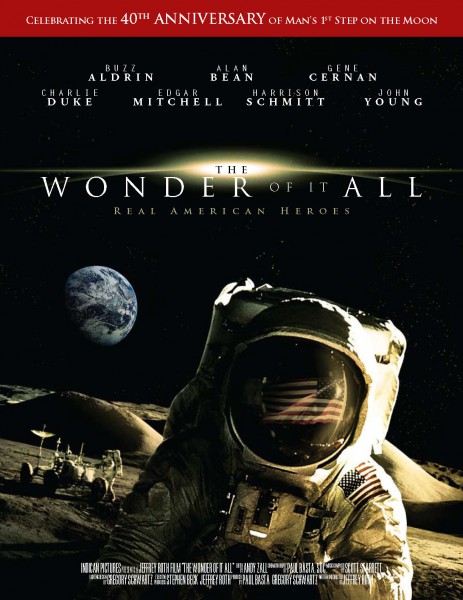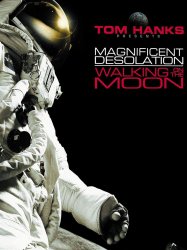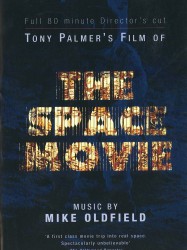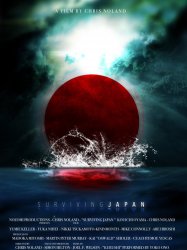The Wonder of It All est un film américain de genre Documentaire
The Wonder of It All (2007)

Si vous aimez ce film, faites-le savoir !
- Infos
- Casting
- Infos techniques
- Photos
- Vidéos
- Passages TV
- Citations
- Personnages
- Musique
- Récompenses
The Wonder of It All is a 2007 documentary directed by Jeffrey Roth and distributed by Indican Pictures. It is composed of first-person interviews with seven of the Apollo astronauts who walked on the moon (Buzz Aldrin, Alan Bean, Edgar Mitchell, John Young, Charlie Duke, Eugene Cernan, and Harrison Schmitt). The astronauts explain their backgrounds, their moon missions, and how walking on the moon changed their lives.
Commentaires
Postez un commentaire :
Suggestions de films similaires à The Wonder of It All
Il y a 8962 ayant les mêmes genres cinématographiques, 8412 films qui ont les mêmes thèmes (dont 5 films qui ont les mêmes 4 thèmes que The Wonder of It All), pour avoir au final 70 suggestions de films similaires.Si vous avez aimé The Wonder of It All, vous aimerez sûrement les films similaires suivants :
 , 40minutes
, 40minutesOrigine Etats-Unis
Genres Documentaire
Thèmes L'espace, Transport, Le programme Apollo, Sur la Lune, Documentaire historique, Documentaire sur les technologies, Space opera
Acteurs Tom Hanks, John Corbett, Bryan Cranston, Matt Damon, Morgan Freeman, Scott Glenn
Note68%





Seuls 12 hommes ont marché sur la Lune ! Vous êtes le prochain... L'exploration de la Lune a été l'un des faits les plus marquants de l'histoire de l'Humanité. Aujourd'hui, grâce à la magie de la technologie, Les spectateurs vont être transportés sur la surface de la Lune, pour accompagner les légendaires astronautes qui ont foulé le sol lunaire, et vivre ce qu'ils ont vu, entendu, ressenti et pensé au cours de cet incroyable voyage.

The Space Movie (1980)
, 1h18Réalisé par Tony Palmer
Genres Documentaire
Thèmes L'espace, La musique, Transport, Dans l'espace, Le programme Apollo, Sur la Lune, Documentaire historique, Documentaire sur les technologies, Musique
Note70%






Moonwalk One (1972)
, 1h36Réalisé par Theo Kamecke
Origine Etats-Unis
Genres Documentaire
Thèmes L'espace, Transport, Le programme Apollo, Sur la Lune, Documentaire historique, Documentaire sur les technologies
Acteurs Laurence Luckinbill
Note71%





Réalisé entre 1969 et 1970, Moonwalk One capte la première tentative de l’Homme de marcher sur la Lune lors de la mission Apollo 11. Véritable documentaire de création, le film permet enfin de découvrir à l'occasion du 45e anniversaire de la mission des images tournées grâce au matériel de la N.A.S.A. et à ce jour jamais montrées. Mêlant séquences d’archives et moments captés dans le vif de l’action...

For All Mankind (1989)
, 1h20Réalisé par Al Reinert
Origine Etats-Unis
Genres Documentaire, Aventure, Historique
Thèmes L'espace, Transport, Le programme Apollo, Sur la Lune, Documentaire historique, Documentaire sur les technologies
Note80%





La Terre vue depuis l'espace à travers des images de la NASA tournées lors des missions Apollo.

Dans l'ombre de la lune (2007)
, 1h49Origine Royaume-uni
Genres Documentaire, Historique
Thèmes L'espace, Transport, Le programme Apollo, Sur la Lune, Documentaire historique, Documentaire sur les technologies
Note79%





Les anciens membres des missions Apollo racontent leurs expériences lunaires.

My Atomic Aunt (2013)
Genres Documentaire
Thèmes L'environnement, La mer, Transport, Documentaire sur l'environnement, Documentaire historique, Documentaire sur le nucléaire, Documentaire sur les technologies, Film catastrophe, Catastrophe sismologique
Note67%





Surviving the Tsunami brings together social, environmental, and personal perspectives of the national catastrophe of the Fukushima nuclear meltdown. In the documentary, Kyoko Miyake travels back to her hometown in Namie, Fukushima, to revisit her old life and assess the trauma still lingering from the disaster. She revisits Namie, her mother's hometown and meets the people who depended on the success of the nuclear plant for their livelihood. The film also follows Bunsei Watanabe and Kyoko Miyake's Aunt Kuniko, two people who hope for the rejuvenation of Namie, despite the disaster that has occurred. Despite having lost family, friends, and jobs due to the meltdown and subsequent fear of the contamination zone, these two individuals are determined to rebuild their towns and neighborhoods and bring back the sense of community they once had. The film follows the residents of Namie, with emphasis on the experiences of Aunt Kuniko, as they come to terms with the reality of living in or near the "radiation zone" left in the wake the plant's nuclear meltdown. Surviving the Tsunami offers a different perspective on Japanese culture, national identity, human adaption, and global nuclear energy and proliferation.

3.11: Surviving Japan (2013)
, 1h30Réalisé par Simon Hilton
Genres Documentaire
Thèmes L'environnement, La mer, Transport, Documentaire sur l'environnement, Documentaire historique, Documentaire sur le nucléaire, Documentaire sur les technologies, Film catastrophe, Catastrophe sismologique
Note81%





The film spans from March 11, 2001 to September 19, 2011, starting with Noland's own experience in the Tōhoku Earthquake and tsunami, Fukushima Daiichi nuclear disaster followed by volunteer activities in Ofunato

Siam Burma Death Railway (2014)
Origine Singapour
Genres Documentaire
Thèmes Transport, Le train, Documentaire sur le droit, Documentaire sur la guerre, Documentaire historique, Documentaire sur les technologies, Politique, Documentaire sur la Seconde Guerre mondiale
This documentary film opens with WWII war between the Allied forces, comprising America – Australia – Netherlands, under the leadership of Great Britain, fought against the Axis countries of Germany – Japan and Italy. On such super-power Japan, which had been waiting for a long time, expecting an opportunity to materialize its plan of Greater Asia. It's Japan’s dream plan to extend its reign via Singapore, Malaya, Thailand and Burma up to India. On 8th Dec 1941, Singapore fell at the hands of Japan, which had begun the war in the name of Asian independence. Immediately, Japan decided to carry out its plan of Greater Asia. As a first step, Japan planned to lay the Siam – Burma railway line connecting Siam(i.e., Thailand) and Myanmar.

Native New Yorker (2005)
, 13minutesOrigine Etats-Unis
Genres Documentaire
Thèmes Les attentats du 11 septembre 2001, L'environnement, Religion, Le terrorisme, Transport, Aviation, Documentaire sur le droit, Documentaire sur la guerre, Documentaire historique, Documentaire sur la politique, Documentaire sur la religion, Documentaire sur les technologies, Documentaire sur le terrorisme, Documentaire sur les villes, Politique, Religion musulmane, Film catastrophe, Film de catastrophe aérienne, Détournement d'avion
Note80%






Hubble (2010)
, 43minutesOrigine Canada
Genres Documentaire
Thèmes Transport, Documentaire historique, Documentaire sur les technologies
Acteurs Leonardo DiCaprio
Note75%





Mai 2009 : La navette Atlantis, avec à son bord sept astronautes part pour une mission de réparation et de mise à niveau du télescope spatial Hubble. D'une durée de 13 jours, cette mission permet l'installation d'une caméra à grand champ (WFC-3) et d'un spectrographe des origines cosmiques (COS) ; la réparation des instruments ACS et de l'instrument STIS ; ainsi que le remplacement des batteries, gyroscopes et de l'instrument FGS. À bord de l'appareil, une caméra IMAX 3D a permis à l'équipe de filmer la mission.
 Connexion
Connexion